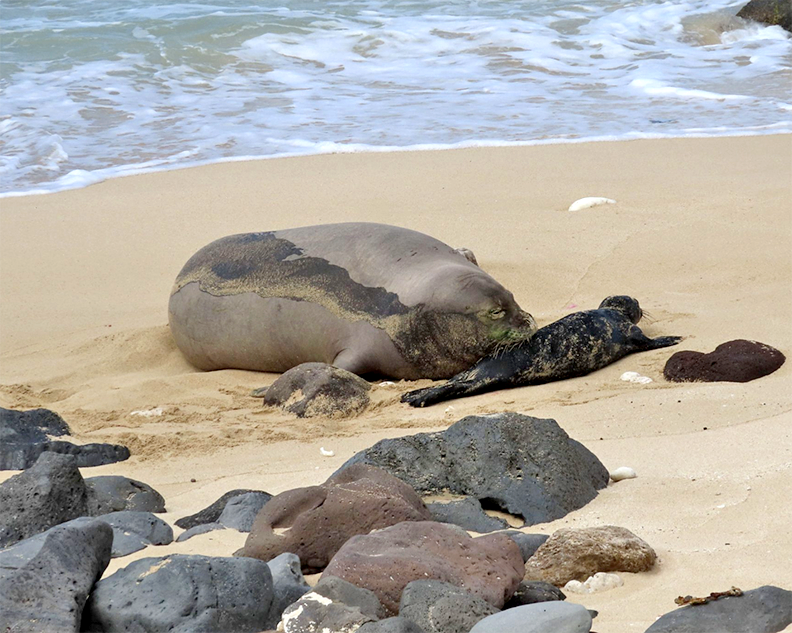Story and photo by Pam Woolway
Time spent with clients in the art studio of Mary Nakamura hardly translates as work for the average business owner. They’re having way too much fun.
Through the full length windows facing west from Waipouli Plaza, Sleeping Giant is the only one dozing on the job. Tables, walls and forearms are colored in blue and purple and yellow.
10,000 Hands, a children’s art school in the heart of Kapa’a opened the summer of 2010 when Nakamura left her long-time position running the Kauai Academy of Creative Arts.
The average work day for Nakamura revolves around encouraging her students to reimagine the world as they think they see it.
“We stand on the back porch before beginning a project and I ask them, ‘What colors do you see in the mountain?’” Nakamura said.
Recognizing nuance of color in an orchid or a leaf is one part of refining the eye.
“I tell them to carry a sketch book everywhere,” she said. “Always be looking at shape and color.”
Classes are offered to children ages 5 and-a-half and older from 8 a.m. to 4 p.m. Monday through Friday during spring, summer and fall school breaks. Children bring their own snacks and lunch. Nakamura provides all supplies.
A generous part of her curriculum focuses on the use of recycled materials.
“‘You don’t have to ask your parents to spend money on art supplies,’ I tell them. ‘Look around the beach or in your grandma’s closet. Grandma’s always have old buttons, scrap fabric, costume jewelry or sewing implements.’”
Driftwood wind chimes and beaded dream catchers sway from tacks in the studio ceiling; all products of recycled goods donated to the studio or collected by students.
Nakamura is never short on ideas. Sock puppets, tie-dye t-shirts, paper mache creatures, as well as a multitude of painting and drawing projects decorate her walls.
For one project Nakamura brought in a pineapple, then borrowed an orange and a banana from a few sack lunches. Still life exercises play a key role in both artistic development and self-confidence for the children.
“It’s important for kids to study a thing for line, shape and the colors they see,” she explained. “Because they’re all sitting in different places at the table, their perspectives change. This way they can’t copy.”
Even young children can be insecure about their artwork.
“They worry about doing it right. I tell them, ‘It’s about what you see, how you see it and what flows from your heart. No reason to compare yourself; your art is all about you.’”
This is one of the reasons Nakamura prohibits the presence of erasures.
“Erasures make them want to perfect their work,” she said. “Art is art. There’s no right or wrong.”
To learn more about upcoming classes 10,000 Hands, e-mail HYPERLINK “mailto:marysnakamura@yahoo.com” marysnakamura@yahoo.com or call, 652-2260.
Discover more from ForKauaiOnline
Subscribe to get the latest posts sent to your email.





Leave a Reply